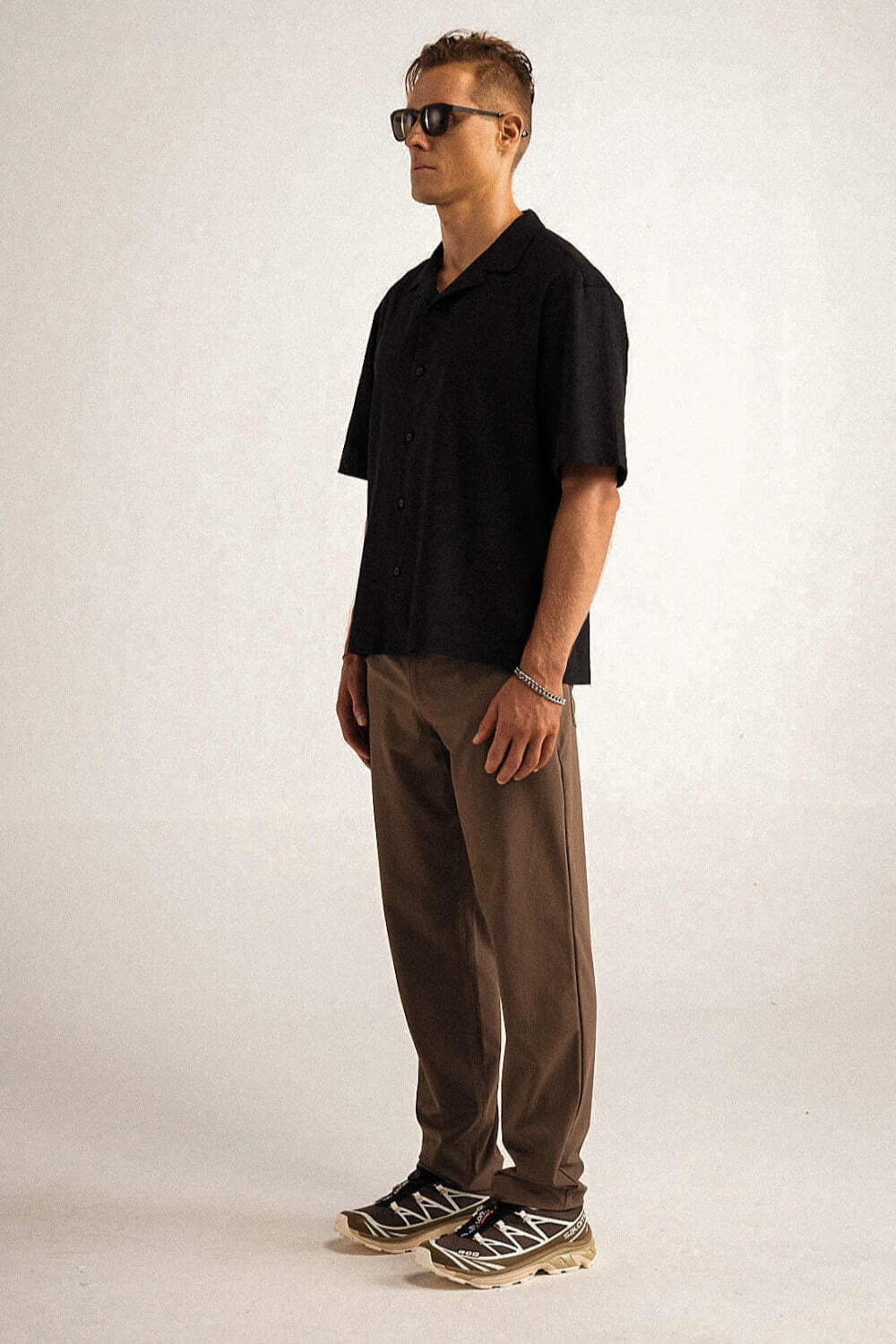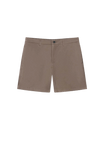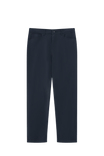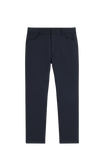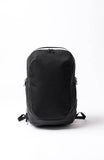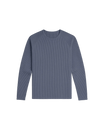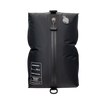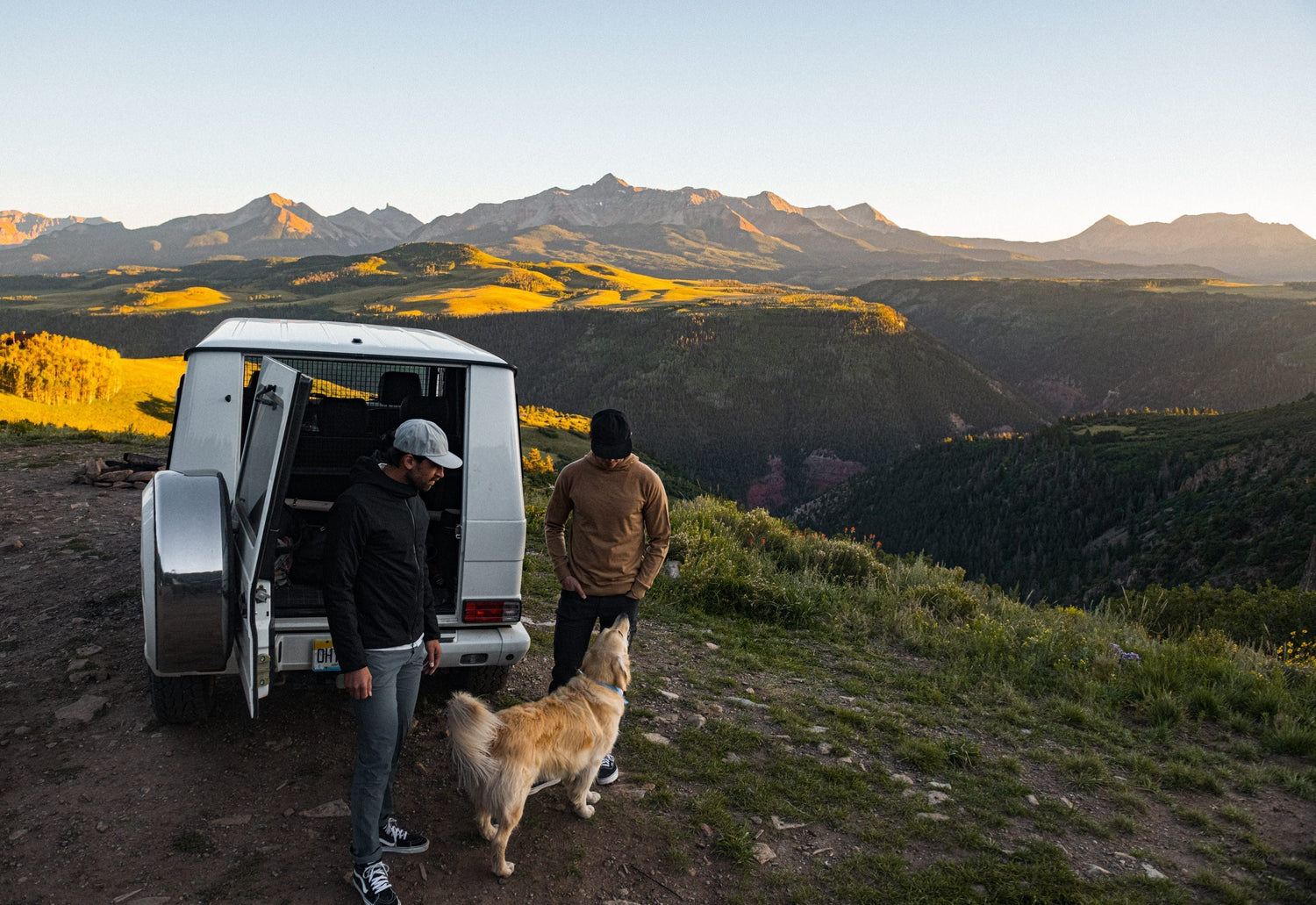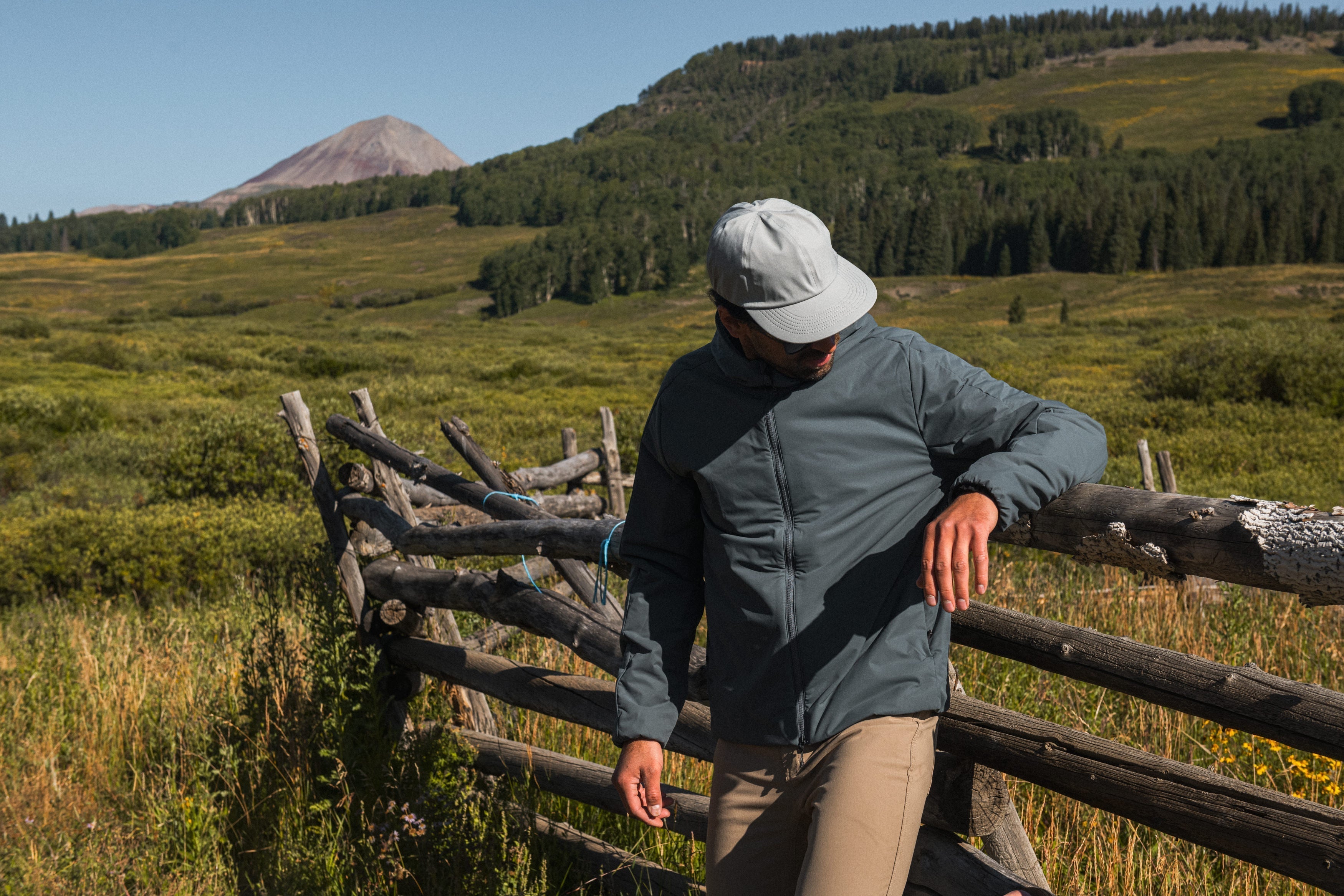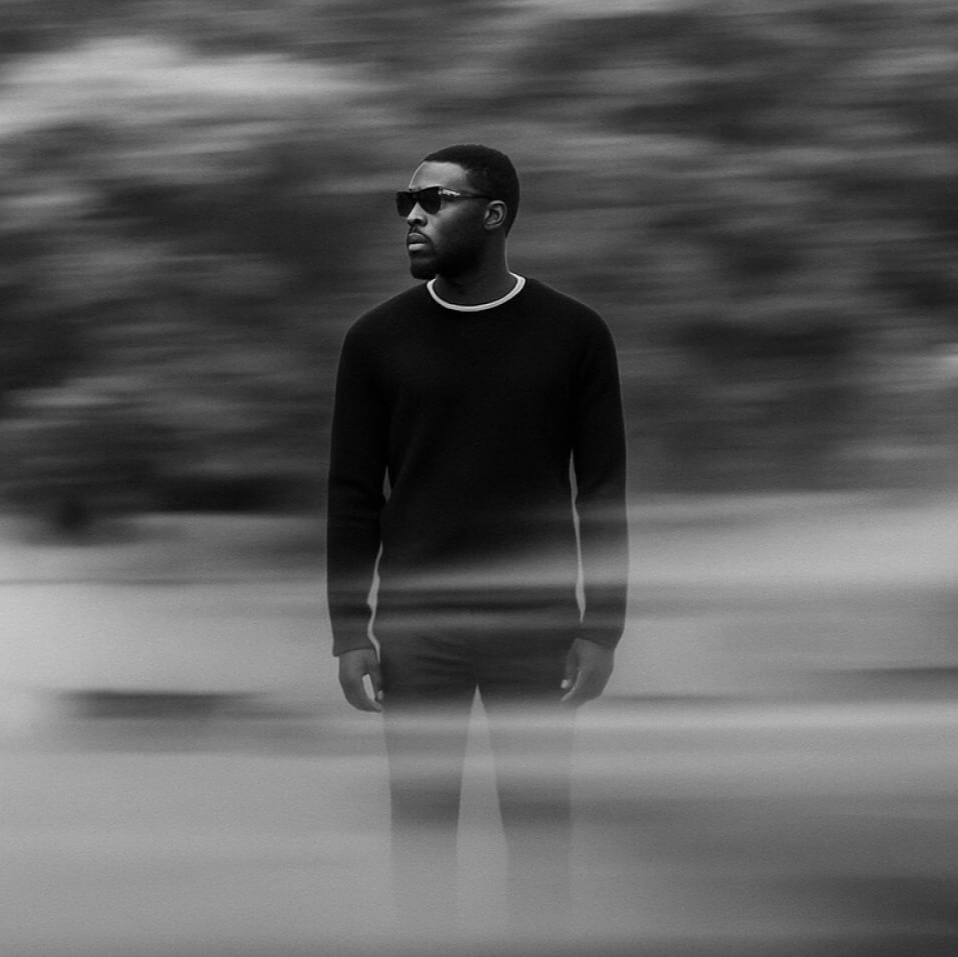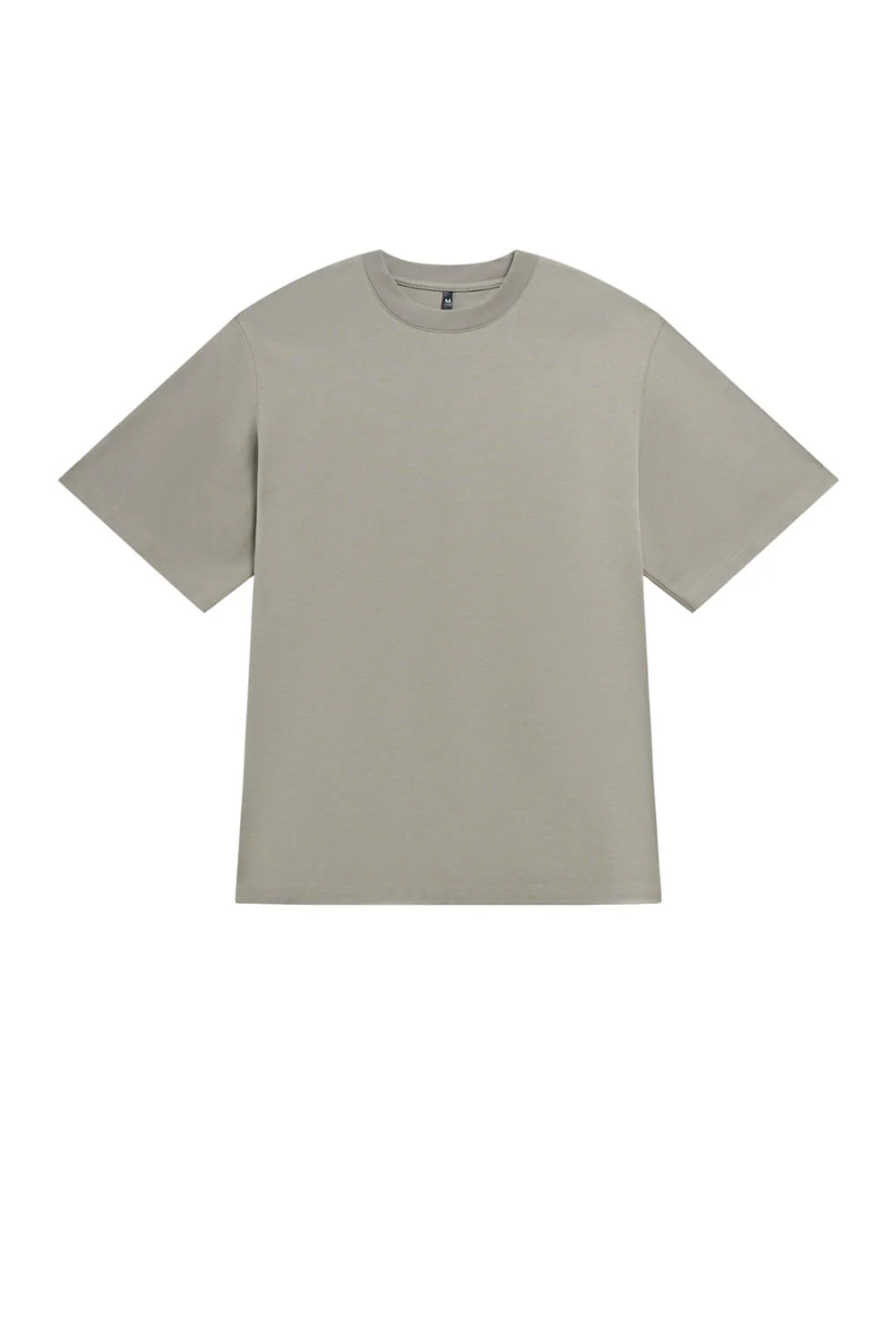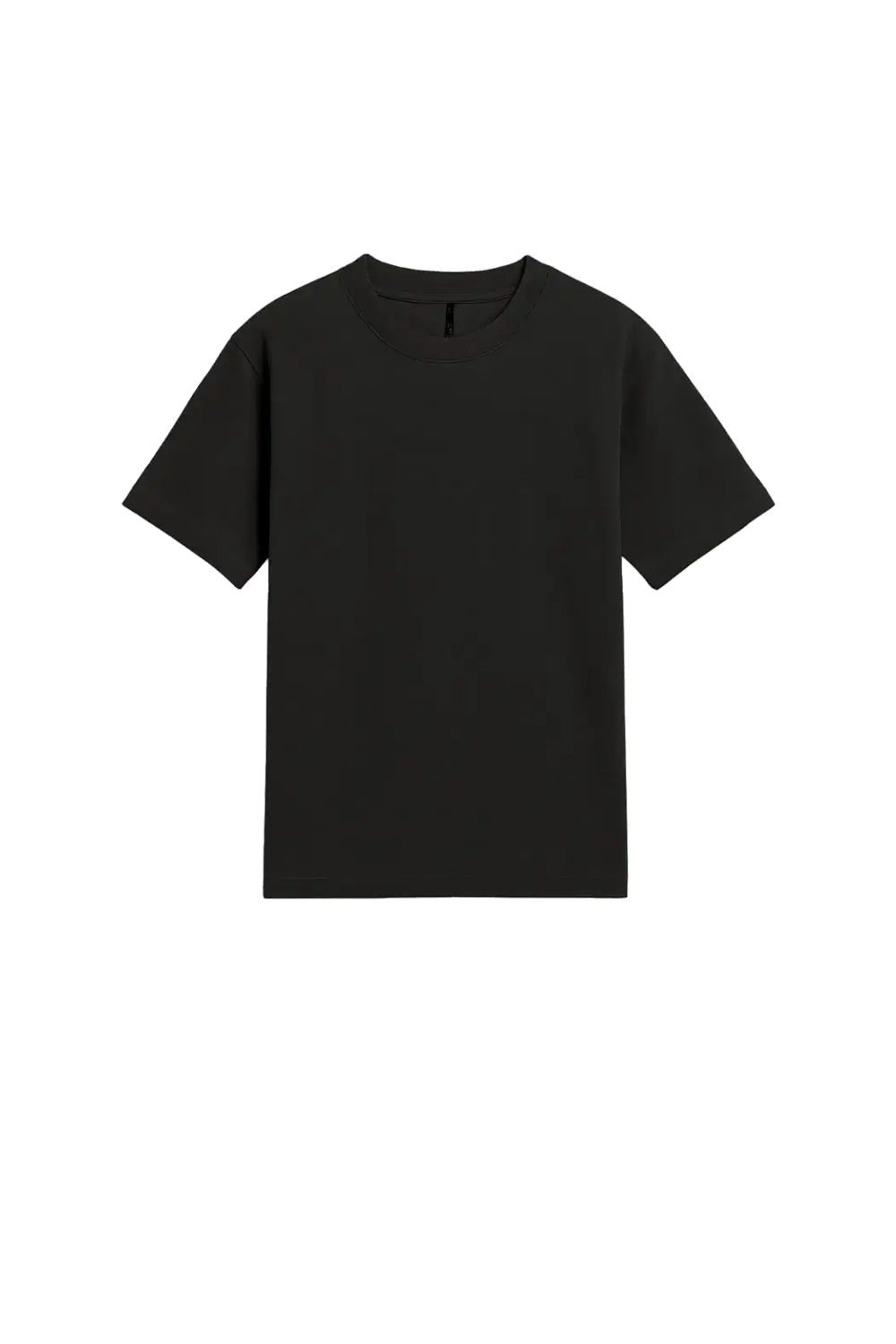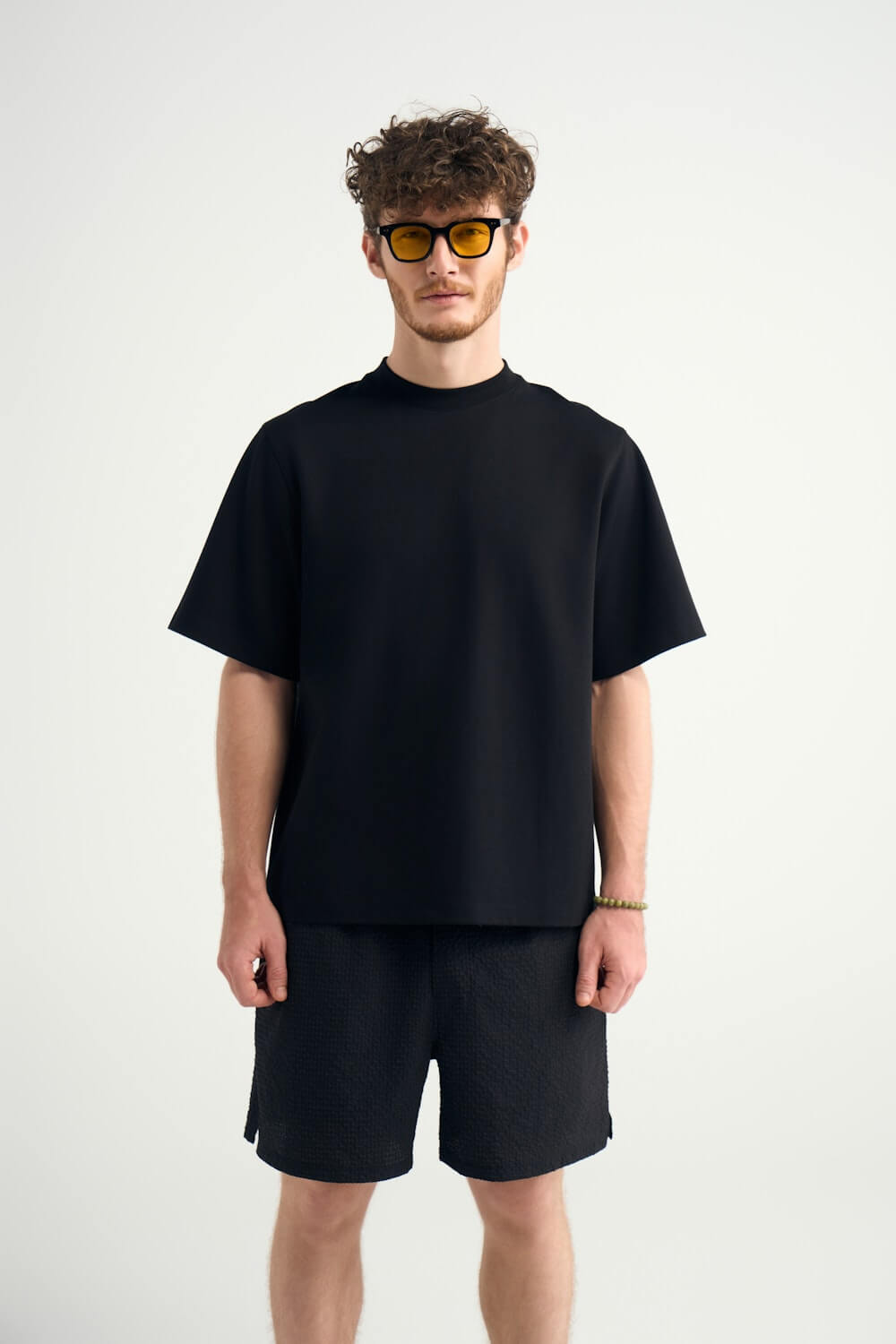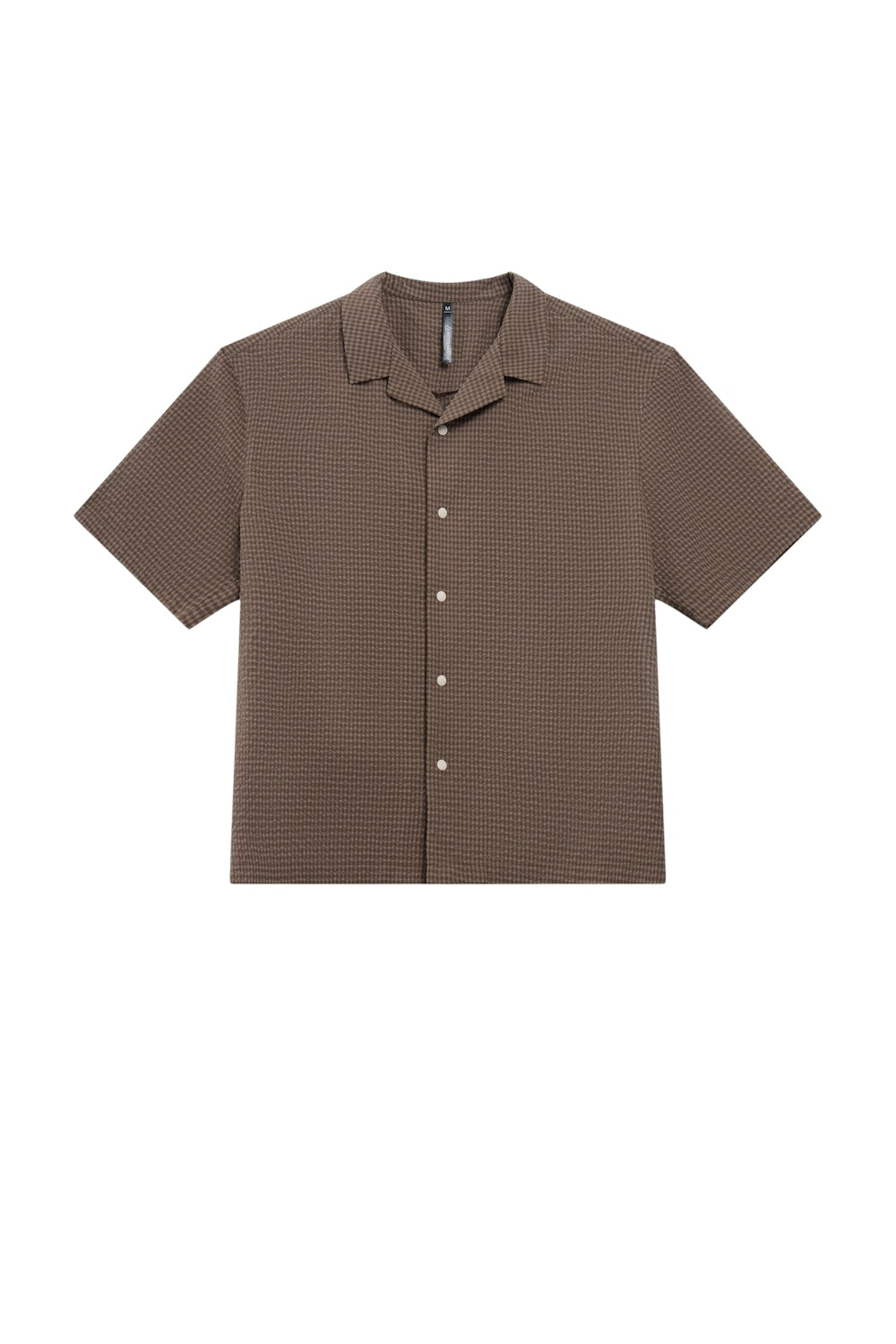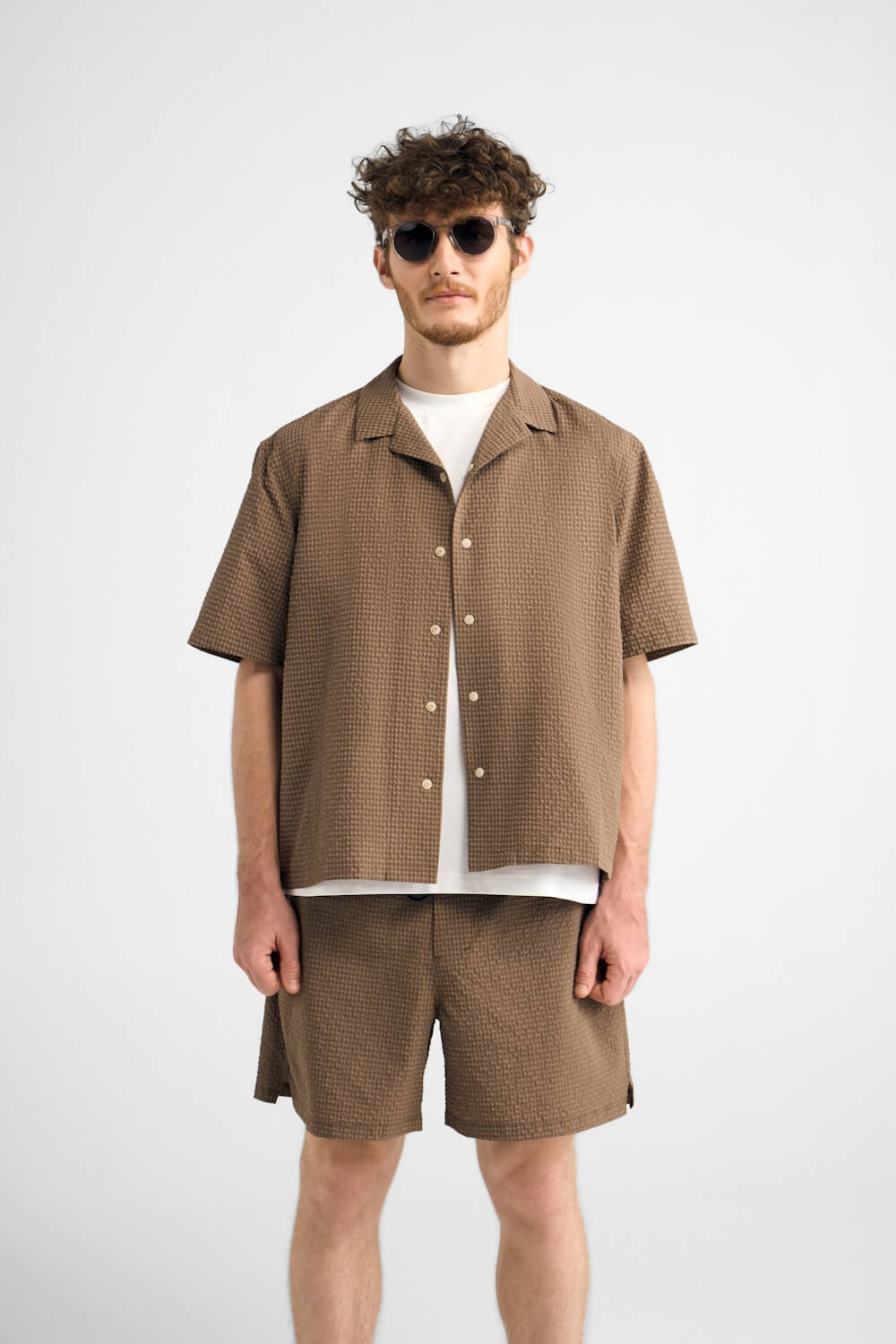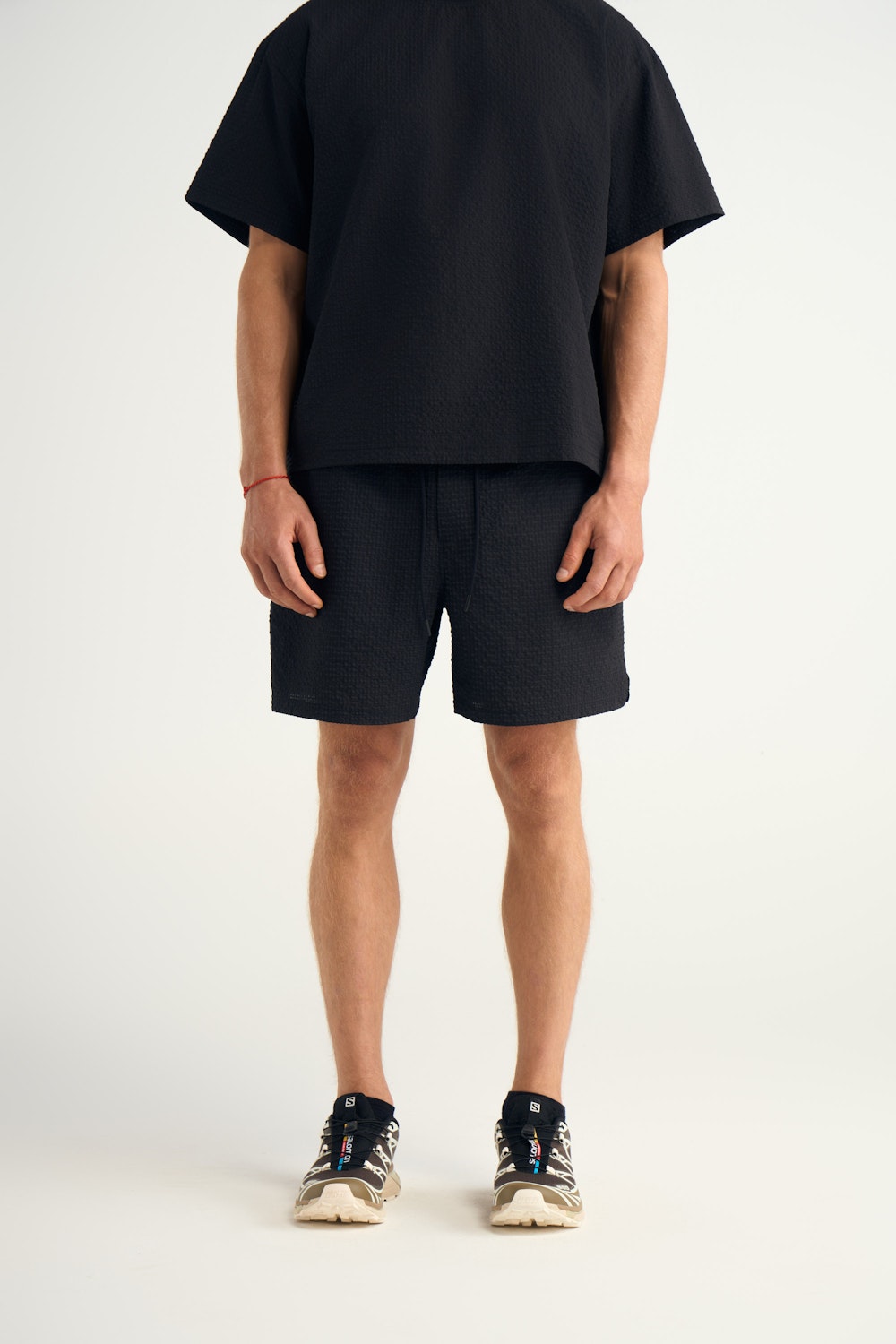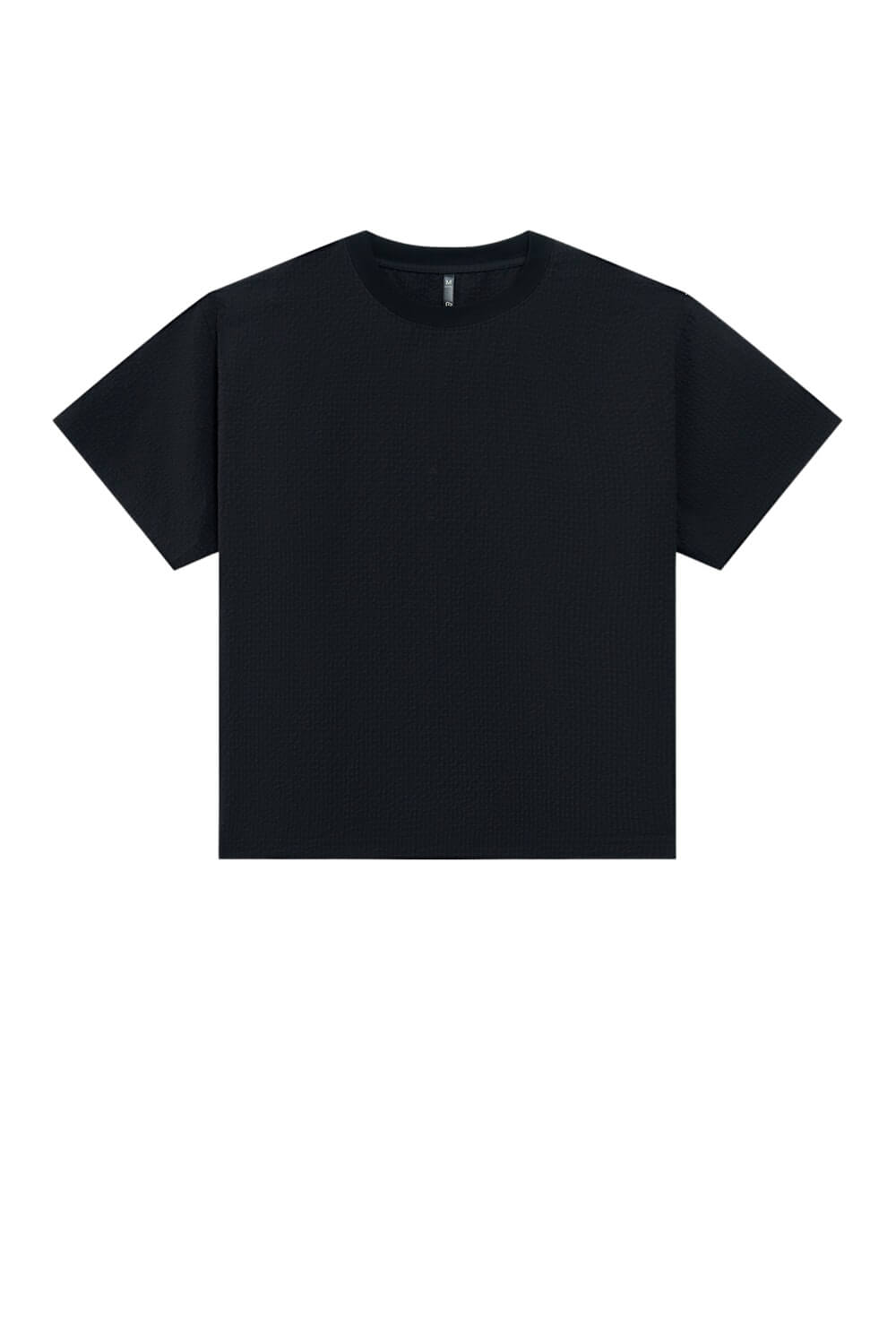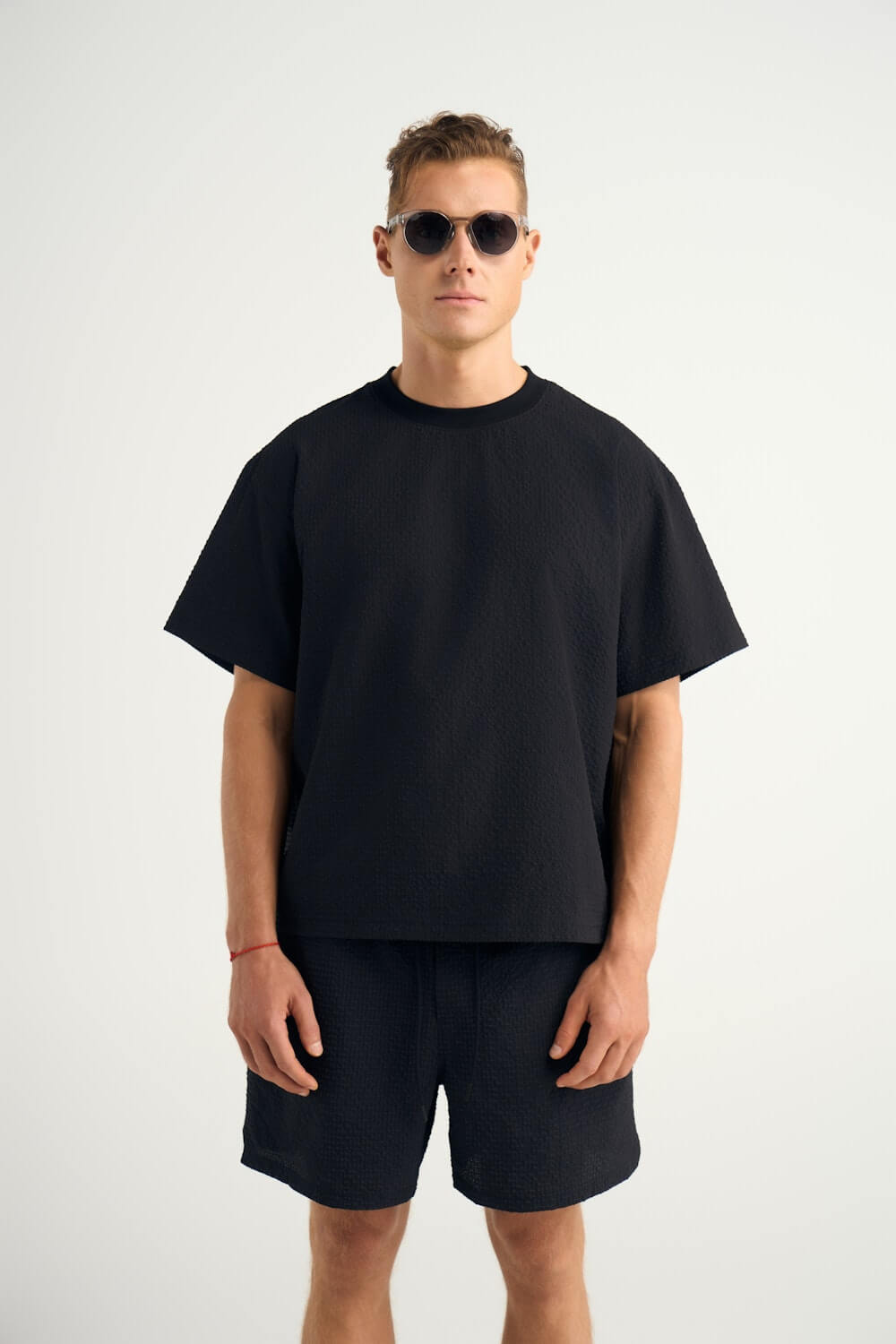Packing for a camping trip walks a fine line between being prepared and being buried in gear. Figuring out what to wear camping means choosing pieces that earn their spot, such as layers that breathe, move, and hold up when the weather flips. We've spent enough nights under open skies to know: the right kit keeps you present, not preoccupied. This is how we pack light, stay ready, and look sharp doing it.
Our Camping Clothes Philosophy
Camping isn’t a performance. It’s a return to simplicity, to the quiet, to what really matters. What to wear camping should feel intuitive, not like you're auditioning for an outdoor catalog. A few core ideas shape our take on camping clothes:
The Cultural Shift: Less Stuff, Smarter Stuff
More and more, the outdoor crowd is dialing it back, not in ambition, but in bulk. We're trading overflow bags for smarter layering. Fewer “just in case” items, more “wear this anywhere” essentials. The best pieces? The ones you forget you're wearing, because they just work.
What we hear from experienced campers:
- “I want clothes that do double duty.”
- “If it’s not comfortable and durable, I’m not packing it.”
- “I’ve worn the same tee for three days straight. Still felt great.”
It’s about timeless, hardworking pieces that belong on the trail and around the fire pit.

Function First, Style Close Behind
We build our kits the way we build our campsites: intentionally. Each piece has a job, such as breathable synthetics or merino next to skin, insulation that warms without bulk, and shells that block wind and brush without melting by the fire. Yes, function comes first. But style's not far behind, and neither is comfort. You want to move freely, layer smartly, and feel like yourself—not like a walking gear catalog.

Durability Where It Counts
Camping pushes your gear. We’ve seen sleeves rip on branches, jeans that stay wet for days, and cheap synthetics melt near a fire pit. That’s why seasoned campers choose materials that hold up under pressure. These are quick-dry blends, wool that insulates even when wet, and tech fabrics tough enough for brush but breathable enough for long hikes. Durability isn’t a bonus out here, but the baseline.

The Layering System: Non-Negotiable
Whether it’s a frosty morning in the Rockies, a misty car camping weekend, or a late-night festival set under a starlit sky, the rule holds: layer or suffer. Your clothing should move with the elements.
-
Base Layer: Start here, close to the skin. It’s your sweat manager, your odor shield, your comfort basecamp.
- Go with merino wool or synthetics.
- Absolutely no pure cotton. It holds moisture and drags down body temp fast.
-
Mid Layer: This is where the warmth lives. You want insulation without the bulk.
Think fleece pullovers, wool sweaters, waffle-knit hoodies. Needs to breathe but hold heat.
-
Outer Layer: Your armor. Keeps you dry, blocks wind, and doesn’t melt by the fire.
Lightweight rain jacket or softshell. Waterproof, wind-resistant, and durable enough for brush, scrambling, or chopping wood.

Protection: Sun, Bugs, Brush
Depending on where you’re headed, nature doesn’t always play nice. Long sleeves and tall socks help guard against ticks and mosquitoes, especially in overgrown or humid areas. Lightweight sun hoodies, buffs, or gaiters offer breathable coverage that keeps UV and biting flies off your skin without overheating you. A brimmed hat or one with a neck cape can make long hours in the exposed sun far more bearable. And when bugs are out in full force, synthetic pants are a smarter bet than shorts—less skin, fewer bites, more peace.

Weather: The Real Dress Code
The forecast might say 70 and sunny, but the backcountry loves to flip the script. One minute, it’s golden hour. The next? You’re racing to get your tarp up in a downpour. That’s why we always pack with range in mind. Not weight. Range.
A shell jacket, an extra layer, a clean pair of socks. They’re the difference between sitting out the night or leaning into it.
So when you’re deciding what to wear camping, think less about what looks good in the morning light and more about what still feels right when the temp drops, the wind kicks up, or the coffee takes a little longer to boil.

Up next? We’ll break down our full camping kit, starting with what we pack, what we skip, and what we never camp without. Want to keep going with the full kit loadout?
What To Wear Campaign: The Core Kit For 3–5 Day Trip
This is our go-to setup for what to wear camping on a few solid days off-grid. And just enough to keep things fresh without overpacking:
-
2x X Cotton Tee or Merino Wool Tee
Sweat-wicking, odor-resistant, wrinkle-proof. The X Cotton Tee’s blended performance fabric handles heat, sweat, and movement like a pro, all with the soft feel of your favorite everyday tee without the merino price point or feel.
-
1x Long Sleeve Merino or Tech Shirt
Pulls its weight on cool mornings, sun-drenched hikes, and mosquito-filled zones. Breathes well and layers smoothly. -
1x AirLoft Vest (or Fleece Pullover)
Packs like a champ, warms fast. Toss vest over your tee or under a shell when the temps drop. Campfire-ready and travel smart.
-
1x Venture Zip Hoodie or Venture Hoodie
Soft, sharp, and versatile. Works as your daily driver at camp or your go-to layer on a chilly trail. A hoodie that doesn’t quit.
-
1x Meta Shell or Rain Jacket
Waterproof, wind-resistant, and easy to stash. The Meta Shell is the one you’ll be grateful for when the weather goes sideways.
-
1x Evolution Pant or Diversion Pant
Built for the trail, polished enough for the brewery. Stretchy, breathable, water-resistant, and never clingy.
-
1x Pair of Shorts
If it’s warm or there’s water nearby, add a lightweight pair. Great for drying fast and feeling free. -
1x Camp Joggers or Fleece Pants
Throw these on after a long day. Instant lounge mode. Bonus if they’re merino or fleece-lined. -
4x Merino Socks and Athletic Socks + 2–3x Performance Underwear
Quick-dry, funk-fighting, and breathable where it counts. Keep one clean pair for sleep. Your feet will thank you.
-
Hiking Shoes + Camp Slip-Ons
Go with what fits, grips, and won’t let you down mid-trail. Bring an easy slip-on or sandals option too. Your feet will want a break after long hikes or late-night walks.

- Accessories: Pack a hat (cap or beanie), polarized sunglasses, a buff or gaiter, and light gloves if temps dip. Add a rain cover or trash bag to keep your gear dry.
- Your Pack, Your Basecamp: On any camping trip, your pack is more than just storage; your it’s home base. The Voyager 35L is built for one-bag setups, roomy enough for your full camp kit without the bulk. The 25L is ideal as a streamlined daypack for short hikes, lakeside loops, or setting up camp. And the Sling Bag keeps essentials like your phone, snacks, or headlamp within arm’s reach when you're on the move. Choose your carry based on how far you're going and how off-grid you're getting, but bring one that’s built to go the distance.

Optional Add-ons for Specific Conditions
- Bug Net Shirt or Permethrin-treated Layer: For tick country or skeeter hellscapes.
- Sun Hoodie (Lightweight, UPF-rated): Essential for desert, alpine, or long beach exposure.
Winter-Ready Option:
-
Down Vest or Puffy Jacket: For below-freezing nights or snowy camps. Add this if your trip pushes into legit cold weather.
- Thermal Base Layers + Beanie + Thick Socks: Think October-to-February. You'll need that extra insulation. Sleep warmer, move smarter, stay out longer.

This camping clothes kit hits the sweet spot between minimal and ready-for-anything. If you’re still guessing what to wear camping, start here. Dial it in based on season, location, and how wild you plan to get.
Camp Comfort Must-Haves (Beyond Clothing & Shoes)
With the right layers and shoes sorted, it’s time to dial in the extras. These low-bulk essentials level up everything from sleep to mealtime to fireside hangs.
- Sleep system basics: A solid sleeping pad and quality bag rated for your temps, plus pillow, eye mask, and earplugs if you value real rest.
- Camp towel: Quick-drying, packable, and perfect for post-swim or wiping off morning dew.
- Headlamp (with red light mode): Hands-free light for late-night gear checks or moonlit bathroom runs.
- Portable camp chair or sit pad: Elevates any fireside hangout. Because rocks get old, fast.
- Reusable water bottle or hydration reservoir: Hydration at arm’s reach. Go for insulated if nights get cold.
- Power bank or battery pack: For topping off your phone, camera, or headlamp when outlets are nowhere in sight.
- Mini first-aid kit: A few essentials: blister pads, ibuprofen, antihistamines, and tape. Small kit, big peace of mind.
- Bug spray and/or permethrin-treated bandana: Keeps mosquitoes and ticks from ruining the moment.
- Packable blanket or camp quilt: For lounging, napping, or extra warmth around the fire.
You don’t need a garage full of gear, but just the smart, packable comforts that make your camp setup feel like you. And if you’re dialing in your kit for a specific trip, we’ve got you: check out our dedicated guides for mountain escapes, lakeside hangs, and festival weekends.

Camping well starts with packing smart. The right layers keep you ready for whatever the wild throws at you, while a few comfort-driven essentials make camp life smoother. It’s not about having more—just better. Whether you’re headed to the mountains, a lake, or a weekend festival, we’ve got the guides to help you dial it in.

